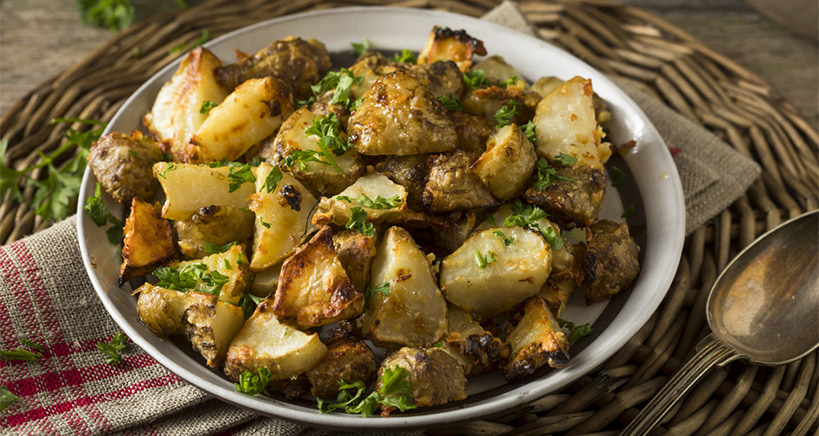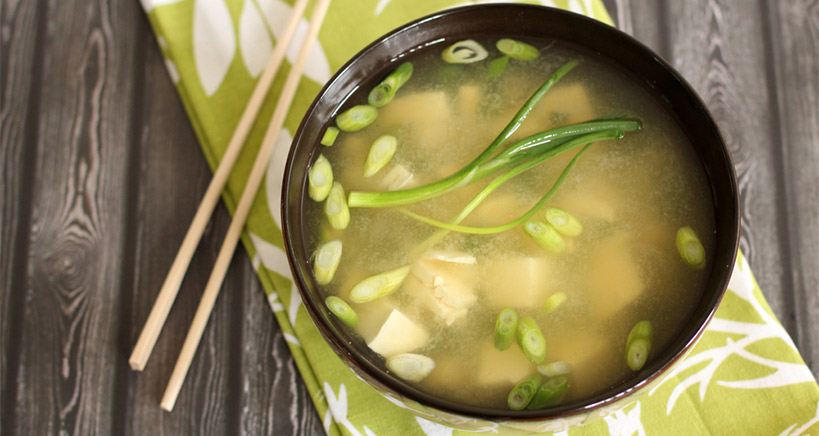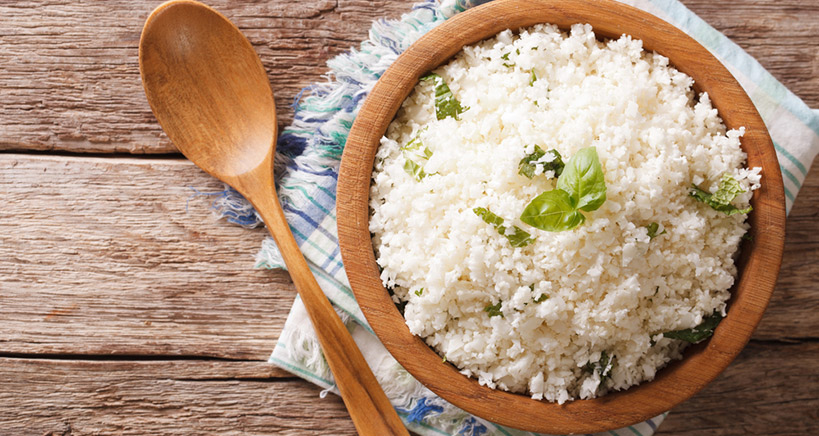
How to Create a Gut-Friendly Catering Menu
For years, we thought of bacteria as organisms that are bad for us, even deadly. However, research has shown that the human body is loaded with “good bacteria,” which help us to digest food and contribute to our well-being. Serving “gut-friendly foods,” – foods that contain friendly bacteria that aid digestion and help to prevent certain diseases – is a big catering trend right now. Add these foods to your menu and your customers will appreciate the effort you make to help keep them healthy while they enjoy your tasty food.
What Are Gut Bacteria?
The gut is simply another word for our gastrointestinal system, which starts in the mouth and includes the esophagus, stomach, pancreas, liver, gallbladder, small intestine, colon, and rectum. The gut is essential in sustaining and protecting the health of our bodies, starting with the intake and absorption of nutrients. The digestive process is the foundation for our body’s ability to function and stay healthy.
Roughly 300 to 500 different kinds of bacteria live inside our gut, along with other tiny organisms, like viruses and fungi, which form the body’s “microbiome.” Every person has a unique microbiome, which is influenced by genes, as well as diet and lifestyle. Our gut bacteria line our digestive system and affect everything from our immune system and metabolism, to our moods and temperament. Gut bacteria help to break down the foods we eat and aid in the digestion of the nutrients that support our body’s functions, such as energy production, skin health, and mental health.
Be Aware of Your Customers’ Gut Issue
Processed foods are the bitter enemy of a healthy gut; therefore, given the amounts of processed foods that people consume these days, it’s not surprising that a large percentage of the world’s population is suffering from gut issues. The food-service industry in general and caterers in particular, need to be aware of these issues and address them through healthier menus and food offerings. Overall, there is a move to make catered events lower in calories and saturated fats, more veggie-centric, and more heart-friendly. So, creating gut-friendly menus is just one more link in the keep-your-clients-healthier-and-happier chain.
An Encouraging Word to Caterers
Catering with all dietary needs in mind – allergies, intolerances, veganism, to name just a few – requires a considerable amount of knowledge, planning, and preparation, but the knowledge that you acquire when reading and researching these areas should be considered part of your overall business strategy. Customers will appreciate the fact that you’ve taken the time to gather information about their dietary needs, and that you care enough to incorporate special foods into your menus. In addition, customers will keep returning once they discover that the foods you create, which don’t exacerbate their conditions, are also tasty and innovative.

Prebiotics vs Probiotics
While prebiotics and probiotics sound similar, they have different roles in the digestive system, though both are gut-friendly. Prebiotics – or prebiotic fibers – are the non-digestible part of foods like bananas, onions, Jerusalem artichoke, apple skin, beans, and others. Prebiotic fiber becomes fermented by the time it reaches the large colon and this fermentation process helps to increase the number of good bacteria in our guts. Kefir, a milk drink that is fermented using kefir grains, is a particularly great source of powerful probiotics.
Probiotics are bacteria that are created by the fermentation process in foods like yogurt, sauerkraut, miso soup, and others. Probiotics bacteria are like seeds, and prebiotic fibers are the nutrients that help these seeds grow; they have a symbiotic relationship in the body, and they work together to the benefit of our health. Researchers have found that prebiotics help to increase the good bacteria already in the gut, which reduces the risk of disease, and that increasing the intake of prebiotic fiber can support bone density, weight management, and brain health.
Foods for a Healthy Gut
In general, the foods that are rich in pro- and prebiotics are the ones that are best for our guts. The benefits of probiotics in yogurt and fermented foods, such as sauerkraut and kimchi, help to populate the colon with beneficial bacteria. Pickling and fermenting, which are surprisingly not the same thing, are becoming popular for their health benefits and are making their way into health-conscious diets.
Whole Grains, legumes, fruits and vegetables are a gut-friendly quartet; the common denominator in all these foods is fiber, a particularly important nutrient. Fiber feeds the bacteria in the gut and helps to reproduce good bacteria. Vegetable skins and whole grains are “insoluble” fiber, which help to keep the digestive system moving and on track. In addition, “alkalizing greens,” such as kale, spinach, and arugula, help to re-balance the body’s digestive system, particularly after it’s thrown out of whack by surgery or, more commonly, a prolonged vacation during which eating healthy is usually not a top priority.
The Japanese Connection
Japanese cuisine is well known for its use of gut-friendly ingredients. The protein-rich probiotic food miso, widely used in Japanese menus, is credited for keeping people in Japan healthy and with longevity. Miso paste is a mixture of cooked soybeans, a fermenting agent, some salt and water, with a taste that ranges from mild to full-bodied. Richness intensifies as the color gets darker; therefore, white miso is the mildest, yellow miso is not too strong and not too mild, and red miso, which is fermented the longest, has a flavor that is concentrated and intense.
Mild white miso, which includes rice and a small amount of soybeans, is slightly sweet and is great in dressings and light marinades. Yellow miso, fermented with barley and a small amount of rice, can be used to supplement the taste and health benefits of a wide range of foods, including soups and glazes. Red miso should be used in moderation, and can be used to boost the flavors of stews and other hearty foods.
The Live the Process website offers a delicious, healthy, and easy miso soup recipe that can supplement your soup menu, giving your customers a beneficial option at your catered events.

Miso Microbiome Soup
Ingredients
- 1 medium white onion, chopped.
- 1 clove garlic
- 1 medium red chili, seeded and chopped
- 2 tablespoons ginger, grated
- 1 tablespoon coconut oil
- 1 cup dried Shitake mushrooms, sliced (or 2 cups fresh)
- 1 cup fresh green string beans, cleaned and cut into bite-size pieces
- 4 cups of water
- 2 tablespoons white miso
- 4 oz. soba noodles
Instructions
- Sauté the onion, garlic, chili, and ginger in the oil.
- Add the mushrooms and green beans. Stir and sauté for five minutes.
- Add about 4 cups water and simmer for 20 mins.
- Stir in the white miso and the soba noodles and simmer for another 5 mins, until the noodles are al dente.
- Top with sprinkled sesame seeds and a tablespoon of chopped kimchi.

Other Gut-Friendly Foods
Along with miso, you can use plenty of other gut-friendly foods in your menu to help your guests stay healthy. Jerusalem artichokes, for instance have strong prebiotic potential, and they are delicious pureed into soups. Add raw broccoli and cauliflower to salads, or cook with other cruciferous vegetables that promote healthy guts. Beans and legumes work to strengthen the cells of the intestines; they feed beneficial gut bacteria, which helps to boost the body’s immune system. Beans are also packed with fiber, protein, and B vitamins, which contributes to a healthy gut and a healthy brain.
Luckily, blueberry season is around the corner and this delicious berry is seriously gut-friendly. Blueberries help to modify the microbiota in the gut to enhance the body’s immune function. The beneficial phytonutrients in blueberries are their anthocyanins, and studies show that blueberries work to strengthen our memory, improve our immune system, and boost our gut bacteria. To treat your guests to a fabulous gut-friendly dessert, prepare easy and delicious Blueberry-Yogurt Parfaits, from The New York Times, which offers the best of all worlds – flavor, nutrients, and gut-friendly ingredients.
Catering with Gut-Friendly Foods
As a caterer, it’s important to keep your eye on popular diets and healthy living-trends. If you cater to the dietary restrictions and specific requirements of your customers, you are more likely to be rewarded with repeat business and positive word-of-mouth. With a little research you can meet the dietary needs of your clients and guests by developing tasty dishes that contain healthy bacteria and stimulate their growth in the body. By finding creative and delicious ways to incorporate gut-friendly bacteria into your catering menu, you will be well on your way to attracting a health-conscious customer base and creating a healthy buzz for your business.